Kirby Larson's Blog, page 31
July 11, 2013
Thursday's Thought
The only disability in life is a bad attitude.
Scott Hamilton
Scott Hamilton
Published on July 11, 2013 06:30
July 5, 2013
Friend Friday
 CeCe & Tom.. . .sort of
CeCe & Tom.. . .sort of
Remember those old Doublemint gum ads: "Two, two, two mints in one"? Well, today's post features two, two, two gems in one: author Tom Angleberger and illustrator CeCe Bell. They are lovely people who happened to be married to one another. And they do wonderful books. Take it away, Tom and CeCe:
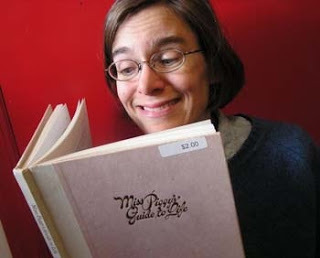 CeCe Bell
CeCe Bell
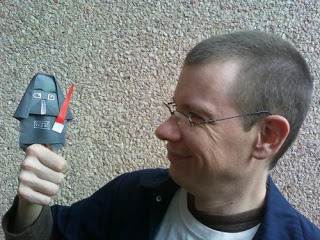 Tom Angleberger
Tom AnglebergerTom: Crankee Doodle is a great example of the easy, cushy life we writers have ... compared to illustrators, that is.
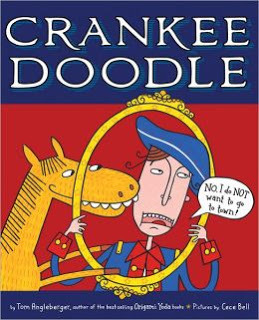
Cece and I concocted this story together during the long long drive from BEA in New York City to our home in the mountains of Virginia.
We have "this would make a great book" conversations all the time that go nowhere. But this one took off right away! We got serious about it long before we got home. As I recall it, I was driving and Cece was actually working out a page layout dummy... to make sure we had the right number of pages/spreads/story beats...
The story still seemed like a good idea even after the road trip was done. And Google didn't turn up any books with the name, which would have been disastrous. We had already put so much work into it, that it was pretty easy for me to sit down and type it all up. (And trust me, it's VERY VERY easy for me to summon up the Crankee voice!)
And then I was done!
Cece, however, was just getting started. The work she put into this project is just unbelievable. Those are real paintings, folks! Months and months of work! On top of all that, she wrestled my words into shape and even added some of her own. (A reviewer actually quoted one of Cece's lines as an example of the book's humor.)
But the payoff of the story is not in the words. After all of Crankee's yakking, the book actually relies on a wild action spread for its punchline. And Cece nailed that, too!
And after all that... my name gets listed first on the book cover!
Normally, I'd never admit that writing is easy... but compared to the other "half" of the process, it sure beats working!
Cece: Crankee was actually the most fun I ever had illustrating any book, including my own. Plus, I convinced the editors to let me hand-letter the text, which is something I love to do...even though that ends up being more work, too. The kind of work I like, though.
I have to admit that I sometimes do get jealous of the fact that Tom's books have been more successful than mine (hence the fact that his name is listed first on the book, which is totally deserved, by the way). I remind myself that it's his success that allows me to keep doing what I love best, which is not just drawing and telling stories, but getting to talk to the real-live Tom Angleberger about all kinds of ideas, both the ones for books, and the ones that are just yakkity yak. That's a terribly constructed sentence, but it was written with love!
We'll be doing more books together soon, and I am excited!
I am excited, too, CeCe. Of course, my not-so-secret hope is that there will be more Horton Halfpott books, but second best would be many, many more Angleberger-Bell collaborations.
Published on July 05, 2013 06:30
July 4, 2013
Thursday's Thought
When nothing is sureeverything is possible.
Margaret Drabble
Margaret Drabble
Published on July 04, 2013 06:30
July 3, 2013
We interrupt the regular programming. . .
To advise you not to miss the book launch of Dana Sullivan's debut picture book, Ozzie and the Art Lesson on July 5 at 7 p.m. at Secret Garden Books, where he will offer no moral lessons, just dog bone cookies and kibble.
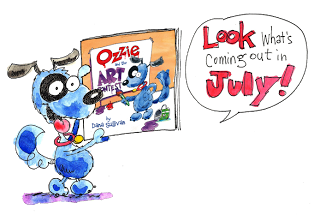
After you attend the festivities, stop back by this blog on July 12 to hear the story behind the story from Dana himself.


After you attend the festivities, stop back by this blog on July 12 to hear the story behind the story from Dana himself.

Published on July 03, 2013 06:30
June 28, 2013
Friend Friday
Please welcome today's guest blogger, Rosanne Parry!

Mentoring and the Life of a Novelistby Rosanne Parry
When I thought about writing today's blog post, mentoring is the first subject that came to mind. That's because about ten years ago I had lunch with Kirby for the first time at a Willamette Writers conference. She was so warm and encouraging and she gave me some very practical advice about the story I was working on at the time, Written in Stone. I remember thinking, why on earth, when publishing is such a competitive field, would any author ever offer another advice of any kind? It seemed counter-intuitive, especially when you realized that thousands of books are rejected for every one published.
But that lunch with Kirby was not that unusual. Time and again I’ve been astonished by the generosity of my fellow writers. Here are a few who were generous mentors to me many years before I showed any promise as a novelist:
Heather Vogel Frederick Carmen Bernier GrandSusan FletcherSusan BlackabyVirginia Euwer WolffGraham SalisburyEllen Howard
Carmen summed up the benefits of mentoring very nicely. She pointed out that I could not write a book like hers even if I spent years studying her specifically, nor could she steal an idea of mine and have it come out remotely like a book I would write. “I have nothing to lose from helping you, Hermanita, and much to gain,” said the very wise Carmen.
Here's another way to look at it. A book is not a car. People traditionally replace cars every five to eight years. Not so with books. People don’t buy a book, love it, and then not buy another for five to eight years. One book leads to another. So it’s in my interest as a working novelist to elevate the quality of books in print because the more people read books they love, the more they want another book. It’s the happiest of addictions!

Today I wanted to thank two women who were wonderful mentors to me on my very first job out of college more than 25 years ago. Veronica “Mice” James and Kathy Law worked at Taholah Elementary when I arrived there to teach in 1987. Mice was, and still is -- three generations later--, the Quinault Language and Culture teacher. Kathy is a historian and, at the time I arrived, was the school librarian. Both these women warmly welcomed me into their community and answered a thousand questions that first challenging, exhilarating teaching year.
My own daughter is graduating from college this year and I am praying she’ll find such women as Mice and Kathy to nurture her though those first years as a professional woman in the world.
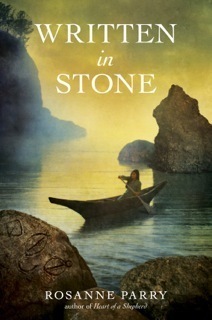
If my husband had not been an Army officer I think we would have settled in Taholah for the long term, but as life would have it I moved away from the Olympic Peninsula in 1989. But the place and the people had a hold on my heart and imagination in a way I couldn’t ignore for long. I started writing Written in Stone a year or two before the Makah resumed their whale hunt in 1999.

Kathy and Mice were encouraging from the start and offered me many useful sources of information including unpublished doctoral research. More importantly they were willing to help me understand the parts of their culture that are not recorded anywhere but in the hearts of their own people—in particular the practices of grieving the death of parents. I could not have written this book authentically without them and my editor would never have accepted it without their input. So a hearty See-oh-qwee-al (thank you) to my Quinault mentors, Mice and Kathy. I can’t wait to bring this book to the school where I taught so many years ago and to the children, now grown with children of their own, who inspired me to write it.
Thank you, Rosanne, for this touching insight into the history behind your new book. What a powerful connection to your own past, and to the Quinault past, this book offers. Siqwil!
Published on June 28, 2013 06:30
June 27, 2013
Thursday's Thought
There is no greater agony than bearing an untold story inside you.
Maya Angelou
Maya Angelou
Published on June 27, 2013 06:30
June 21, 2013
Friend Friday
Please welcome my new friend, Irene Latham, as today's guest blogger!
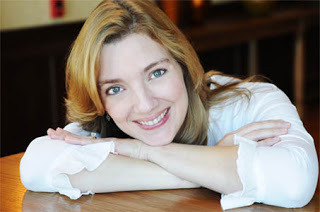
When Your Novel For Children Includes Tough Topics: Writing About Domestic Violence. . .for Kids!by Irene Latham
-------------------------------Earlier this year, I received this letter:
“Hello! I hope that you remember me... I'm currently reading Don't Feed the Boy ...with my son, ...We have a few chapters left, but I wanted to thank you for including children with realistic problems in your book. Particularly, I'd like to thank you for addressing domestic violence. I work as an advocate for victims of sexual assault and domestic violence and these issues are very important to me personally. So, thank you for addressing such serious issues that some children really have to face in their lives!”
The letter means a lot to me. It validates something I feel passionately about: literature for kids needs to give young readers credit for the strength and depth of their emotions. Often these emotions are in response to “realistic problems” that we would like to shield children from. Things like domestic violence and death and drug abuse and incarceration which don't fit inside the picture we want of childhood. And yet these situations define many, many childhoods.
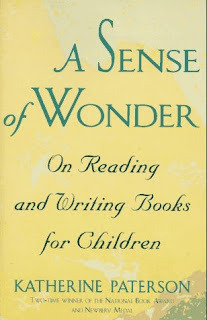
Katherine Paterson recounts a story in her book A Sense of Wonder about a woman approaching her at an event and thanking her for writing Bridge to Terabithia, because the woman's son had recently experienced the death of a friend. And Katherine's response was that her book came too late for that reader. That books are a safe way for a reader to explore different life circumstances and give them strength and solace before an event happens to them personally. And oh, how that resonates! How many times did a book prepare me for something that was to come?
Katherine goes on to say this: “But you see, my job is not to expand vocabularies or teach proper, reverent speech, or even, in the most obvious sense, to uplift. My job is to tell a story- a story about real people who live in the world as it is. And I dare to believe that such stories, even when they are painful, have a power to illumine the reader in the way that a nice tale with exemplary characters does not. But then, I know that the only raw material I have for the stories I tell lies deep within myself, and somehow when I go inside I find a troubled child reaching up for comfort and understanding.”

And so it is with Don't Feed The Boy. At a tender age, I encountered a family that wasn't like mine – a family like Stella's. I didn't understand it, and I didn't know what to do with my feelings. Writing this book allowed me to talk to the younger, confused Irene. It allowed me to attempt to understand what I experienced all those years ago, and how it affected my friendships then and all my friendships since.
If you, too, find yourself exploring difficult subject matter, don't be afraid. It's important, and you can do this. How? Tread lightly. You don't have to be explicit to convey an unpleasant character or act. Use flashbacks for distance. Have your characters overhear things or experience things from under a bed or behind a closed door. Children are as adept as any other reader (perhaps moreso) at reading between the lines. Focus on the qualities and traits and experiences that show what it's like to be a human in this complicated world. Allow child characters to experience the deepest emotions and show your readers through body language and other nonverbal cues. Most of all, don't sugarcoat anything. While silver linings abound and should always, always be pointed out, be as honest in your description of the thunderhead clouds and hail and lightning.
Now, go. Write. Because I want to read your stories!
To find out more about me and my books, please visit my website and follow me on Twitter: @irene_latham. Thank you for reading. And thank you, new friend Kirby, for having me! xo
Thanks right back at you, Irene, for this thoughtful post which has inspired -- no, challenged -- me to go deeper with a WIP.
Published on June 21, 2013 06:30
June 20, 2013
Thursday's Thought
No really great man ever thought himself so.
William Hazlitt
William Hazlitt
Published on June 20, 2013 06:30
June 18, 2013
Howling Good News
Near the end of 2012, I was asked by Scholastic if I would be willing to contribute a short story to an anthology they were putting together, with proceeds to benefit Red Rover. Their motto: "Bringing animals from crisis to care." Not only do the Red Rover folks pitch in during times of crisis (like the recent tornadoes), they also have an arm that connects kids, books and dogs. Pretty great, huh? It took me all of two seconds to say yes. Later, I learned that I was joining a "pack" of writers including such luminaries as Lois Duncan and Norman Bridwell. Wow.
The story's long been written and revised and now I have permission to share the cover:
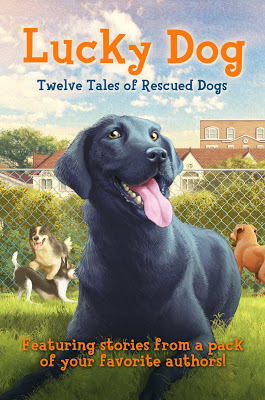
Lucky Dog will be available in spring of 2014. I hope you'll "fetch" a copy to support this great cause.
The story's long been written and revised and now I have permission to share the cover:

Lucky Dog will be available in spring of 2014. I hope you'll "fetch" a copy to support this great cause.
Published on June 18, 2013 09:38
June 14, 2013
Friend Friday
I am thrilled to turn my blog over today to Claudia Mills, someone I consider to be the penultimate writer of chapter books. She's the new Patricia Reilly Giff! I honestly can't remember where Claudia and I met, but I am certainly grateful our paths crossed. I do remember the first book of hers I read, 7 X 9 = Trouble, which I thought was a perfect book for the emergent/newly confident reader.
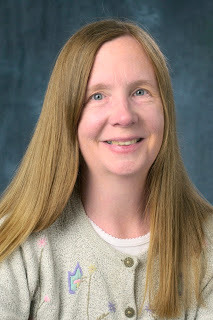 Claudia Mills
Claudia Mills
Thank you, Kirby, for the generous invitation to visit your blog today in celebration of my brand new chapter book, Kelsey Green, Reading Queen.
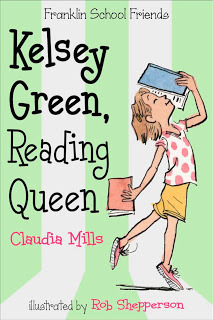
Reviews have started to come in, always a terrifying moment. So far they are mostly lovely, but two noted that my title character, a third grader absolutely determined to win a school-wide reading contest, “is borderline unlikable for most of the contest” (Kirkus) and “isn’t always the most pleasant of third graders – but she’s 100 percent realistic” (Publishers Weekly).
So here is my question: how should I feel about this, given that Kelsey is pretty much me?
 Claudia aka the Reading Queen
Claudia aka the Reading Queen
Like Kelsey, I grew up as a voracious reader. Like Kelsey, I was competitive about reading. I wanted to read the most books, the longest books, the hardest books. Each summer I entered the reading contest sponsored by the North Plainfield (NJ) Public Library, delighted when my name appeared in the paper for having read the most books in my grade. I know what it’s like to want to do nothing but read all day long, shunning other activities. I was so pleased when, once I had children, I read in a parenting magazine that the best thing you can do for your children is let them see you read. I was on track to be the best mother ever!
But according to Kirkus and Publishers Weekly, obsessive and competitive readers aren’t all that likable and pleasant.
Oh, dear!
The larger writing question I’m thinking about here is how authors can create “borderline unlikeable” characters that readers can care about and root for. We certainly don’t want our characters to be perfect people (I hate perfect people myself). We want them to have flaws because otherwise they can’t learn from their flaws and overcome them. But how flawed is too flawed? How can flaws be made appealing?
I think the answer has something to do with what Brenda Ueland, in her wonderful book If You Want to Write, calls “microscopic truthfulness.” If a character is willing to be fiercely honest about her flaws, her candor disarms us. And it helps hugely if the reader can wince with rueful self-recognition: if the character’s flaws are ones we share. Poet Billy Collins wrote, "I don't think people read poetry because they're interested in the poet. I think they read poetry because they're interested in themselves."
I’m lucky that I could give Kelsey quintessential readerflaws, and that my audience – naturally! - is readers. I hope readers will see themselves in Kelsey, because they, too, are book-gobblers who do not want to leave off at the exciting part to attend a sibling’s band concert or to pay attention in math class. Yes, for better or worse, I am Kelsey, but I’m confident that many of my readers are Kelseys, too, people of various degrees of likeability who want nothing more in this world than to be left alone to READ.
from Kirby: I would write a really scintillating conclusion here, but I am too busy reading Kelsey Green, Reading Queen.
 Claudia Mills
Claudia Mills
Thank you, Kirby, for the generous invitation to visit your blog today in celebration of my brand new chapter book, Kelsey Green, Reading Queen.

Reviews have started to come in, always a terrifying moment. So far they are mostly lovely, but two noted that my title character, a third grader absolutely determined to win a school-wide reading contest, “is borderline unlikable for most of the contest” (Kirkus) and “isn’t always the most pleasant of third graders – but she’s 100 percent realistic” (Publishers Weekly).
So here is my question: how should I feel about this, given that Kelsey is pretty much me?
 Claudia aka the Reading Queen
Claudia aka the Reading QueenLike Kelsey, I grew up as a voracious reader. Like Kelsey, I was competitive about reading. I wanted to read the most books, the longest books, the hardest books. Each summer I entered the reading contest sponsored by the North Plainfield (NJ) Public Library, delighted when my name appeared in the paper for having read the most books in my grade. I know what it’s like to want to do nothing but read all day long, shunning other activities. I was so pleased when, once I had children, I read in a parenting magazine that the best thing you can do for your children is let them see you read. I was on track to be the best mother ever!
But according to Kirkus and Publishers Weekly, obsessive and competitive readers aren’t all that likable and pleasant.
Oh, dear!
The larger writing question I’m thinking about here is how authors can create “borderline unlikeable” characters that readers can care about and root for. We certainly don’t want our characters to be perfect people (I hate perfect people myself). We want them to have flaws because otherwise they can’t learn from their flaws and overcome them. But how flawed is too flawed? How can flaws be made appealing?
I think the answer has something to do with what Brenda Ueland, in her wonderful book If You Want to Write, calls “microscopic truthfulness.” If a character is willing to be fiercely honest about her flaws, her candor disarms us. And it helps hugely if the reader can wince with rueful self-recognition: if the character’s flaws are ones we share. Poet Billy Collins wrote, "I don't think people read poetry because they're interested in the poet. I think they read poetry because they're interested in themselves."
I’m lucky that I could give Kelsey quintessential readerflaws, and that my audience – naturally! - is readers. I hope readers will see themselves in Kelsey, because they, too, are book-gobblers who do not want to leave off at the exciting part to attend a sibling’s band concert or to pay attention in math class. Yes, for better or worse, I am Kelsey, but I’m confident that many of my readers are Kelseys, too, people of various degrees of likeability who want nothing more in this world than to be left alone to READ.
from Kirby: I would write a really scintillating conclusion here, but I am too busy reading Kelsey Green, Reading Queen.
Published on June 14, 2013 06:30



